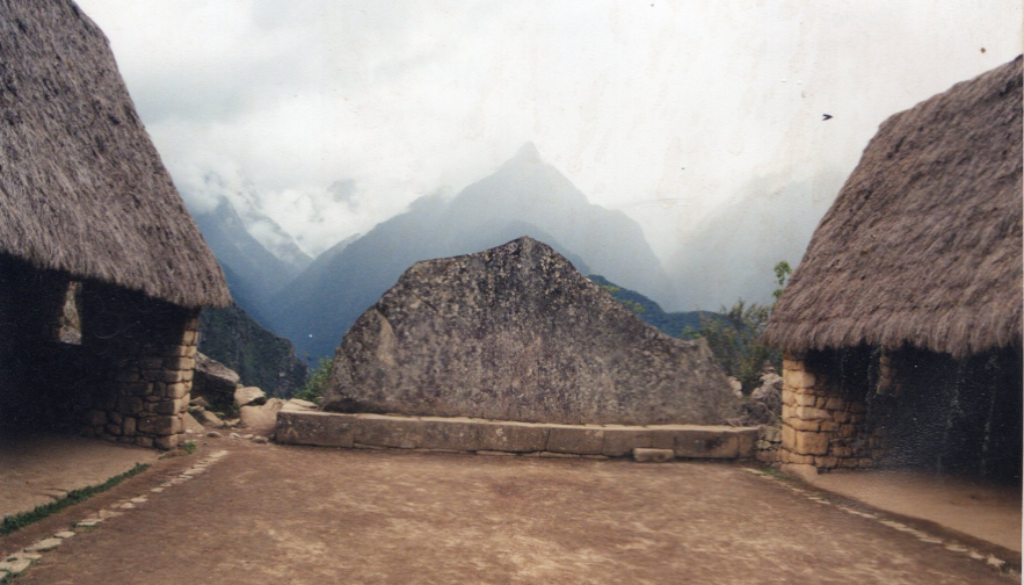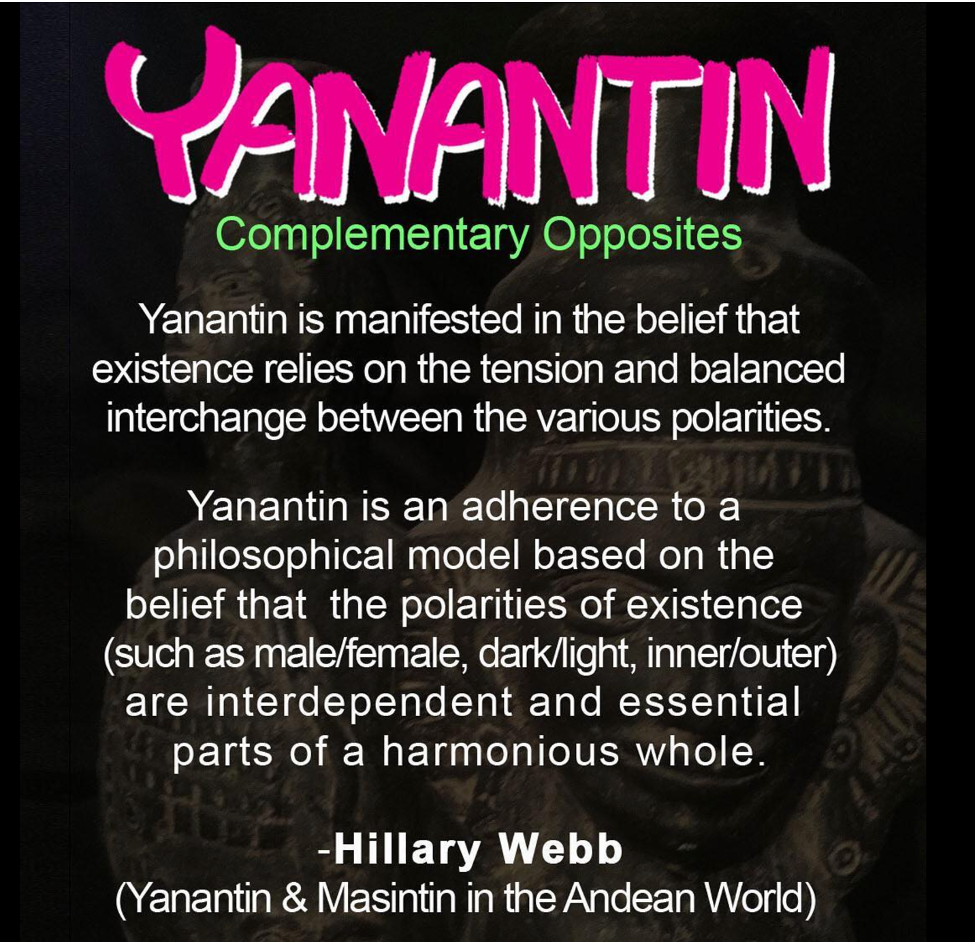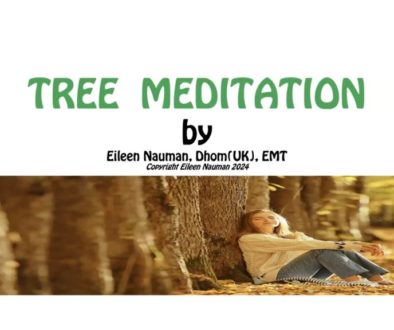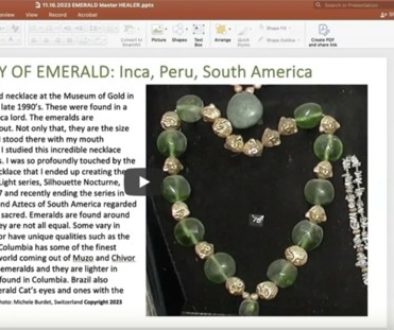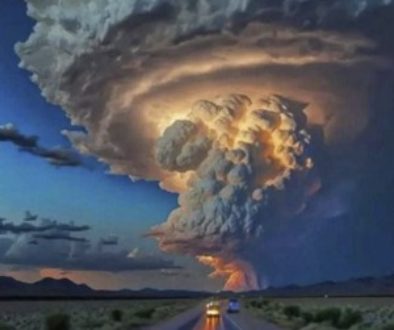Yanantin – A Complementary Partnership Between Light & Dark, Feminine & Masculine Energies
This photo above could have a small book written about it. Yet, to the casual observer, it doesn’t look like much at all. Certainly, nowhere near its power and importance not only to the metaphysical/mystic world, but also to the world of the archaeology, astronomy, astrophysics, and quantum physics. Each can learn from, and understand, what the significance of this one photo really means.
I began my visits to Machu Picchu in 1999 when my husband David and I went on a 12-day Inka Initiation journey with Juan Nunez del Prado, a 2nd generation Peruvian archeologist. I had been taught to “walk the land,” as a child by my mother, who was of the Celtic belief system and Natural World spirituality. My first eighteen years of life became training with her, as well as with my father who was part-Eastern Cherokee, and had been handed down and taught in his generation to utilize a healing treatment to help those who suffered. There was no label for this. Medicine in his world meant a skill/talent, or a knowledge that one brought into this incarnation. Both my parents were service workers here to help others. My mother was a medical herbalist and a gardener, and she taught me all she knew. I was a willing sponge, having a strong, powerful affinity for Mother Earth and all her relations. Surprisingly, without the labels of what each of them were, they had much in common: a respect and love for Mother Earth. Serving and helping those who were suffering. There were days of the year that meant something to each of them in their particular belief system. My father’s medicine was much more than I realized. At 25, I was in a New Age bookstore in Pittsburgh, Pennsylvania, walking along the shelves of books, when one flew off and landed at my feet.
I was jolted by the event, having seen it explode off the shelf, sail through the air and land right in front of me. As I picked up the book, the title was Shamanism, written by a South American writer. I bought it and read it. I realized that after I’d been struck by lightning at 9 years old, and my father took this as a ‘sign’ that I was to be taught my generation’s “medicine,” that to other people in the world, the gift given me (and a lot of training from 9-18 years old) was known collectively under the label of shamanism. I was a family-lineage shaman through my great-great Eastern Cherokee grandmother.
This ‘cross-training’ between belief systems that I was born into, fused and blended within me in my late 20s. Through my 30s, I continued to connect and gradually understand the beautiful paradigms that I was honored to be trained in as a child, and work with and comprehend to a certain level. By the age of 40, I was practicing what I was taught and serving all my relations—and still do to this day. I brought all my abilities and skills to that peak moment in 1999 when walking the land took on a huge new awareness known to only a few Peruvian shamans and medicine Quechua keepers of the old belief system that had sustained them for thousands of years. I had been absorbed into this cultural belief system without realizing it at the Machu Picchu Complex,teaching me each day. There were no labels. Only energy and the expression of it at the complex. I knew energy well from my decades of training, so it was easy for me to reach into my training and experience to put the complex energy into a workable and understandable framework that I could comprehend.
In Peru, the Inka history is the most recent one until the Spaniards came and destroy it—or tried to.They forced Catholicism onto the Inka people that stretched from one end of South America to the tip of it. The ‘backbone’ of the mountain range was the Andes. Literally, it looks like a spinal column with vertebrae if you look at it from Space. Despite the cruel, ruthlessness of the invaders, the Quechua people instinctively went ‘underground’ and kept their ways, beliefs and knowledge, passing it on generationally. I found great sameness with them through my parent’s training and their belief systems. When one took away all the labels? They believed in the SAME THING: a connection with Pachamama, Mother Earth, and all her relations. Where both genders were equally respected and acknowledged. Where the HEART was our GPS, not our foolish 3rddimensional brain/mentality, and women were considered sacred because only they, could create life. With this backdrop, I want to tell the story of this sacred photo I took at Machu Picchu.
Apu (Quechua for ‘mountain spirit’) Yanantin, sits northeast of the Machu Picchu Complex, sat proudly in the distance, a part of of the great Andean Mountain chain, and along with the hand carved Inka ‘Pachamama stone’ (also called the sacred rock or stone) at the end of the two huts plaza on the northeast side of Machu Picchu complex. In fact, this was the entrance to the trail that led up to Huynu Picchu (Quechua for ‘young mountain’) that began outside the wooden gate near where the Harmony Plaza had been created. Here, if a person would stand in the center of the Harmony Plaza, facing Apu Yanantin (and the opposite Apu San Juan) and the Pachamama Stone?With your feet firmly on the ground, knees slightly softened, relaxed and arms hanging at your side, you will begin to feel gently pushed in the four directions, Allow the “movement” but remain where you are standing. You will bend at the waist, to the right, left, forward and back. What is happening is that Apu Yanantin is working in concert with the Pachamama Stone and together, they are realigning the energy/vibrational fields of your aura and making you as much in personal ‘harmony’ with yourself as you can be. To be ‘in balance,’ that needs no label.
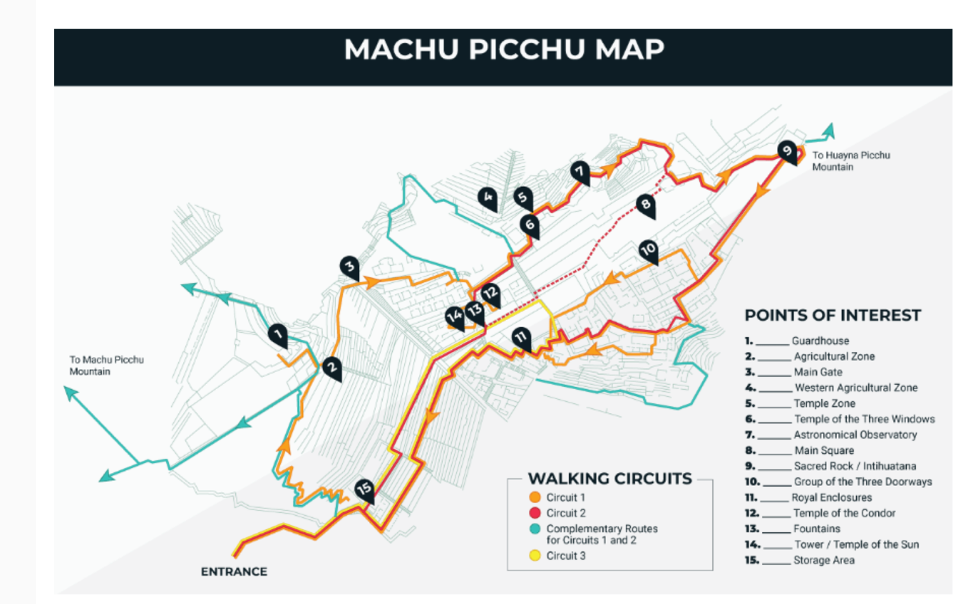
On this map Number 9 shows the northeast gate and trail that leads to Huayna Picchu. On the other side of that gate/trail is where the Inka’s fashioned the Pachamama Stone (sometimes referred to as the ‘the sacred’ rock/stone), and the Plaza of Harmony.
I can envision the Inka priestesses and priests, as well as the emperor who led the Incas, perform this morning ceremony without fail; the leaders of the empire desiring to be in as close to harmony as they could be in order to serve the people. The two huts were built on opposite one another on the plaza and symbolized the polarity that Apu Yanantin possesses: partnership with another, light and dark, feminine/masculine, and inner/outer energies, to name just some of what he symbolizes.Apu San Juan, sitting in the southwest, directly opposite of Yanantin, is a part of the Andean mountain range and completed the four directions. It too, contributes directly to the energy of this alignment.
This same ‘harmony alignment’ can be found at Chalice Well, Glastonbury, England, at the Vesica piscis (Sacred Geometry) pool where two circles overlap. It is in the ‘eye’ where the overlap is at, that produces the very same ‘alignment’ energy as here, at the Plaza of Harmony. I discovered over the decades, many ancient temples, dolmens, tors, and stone circles, also contain this sacred geometric shape as well. The Inka stone masons created the Pachamama Stone in honor of Mother Earth, but also to mimicked the outline of Apu Yanantin whose energy is one of balance/harmony, and is moving through the stone that focuses the energy upon the human being standing in the center of Harmony Plaza get rebalanced, along with the energy connected with Apu San Juan.There was a Vesica piscis here, as well. Please look at my illustration to show the energy overlap of it between the two huts on the plaza.
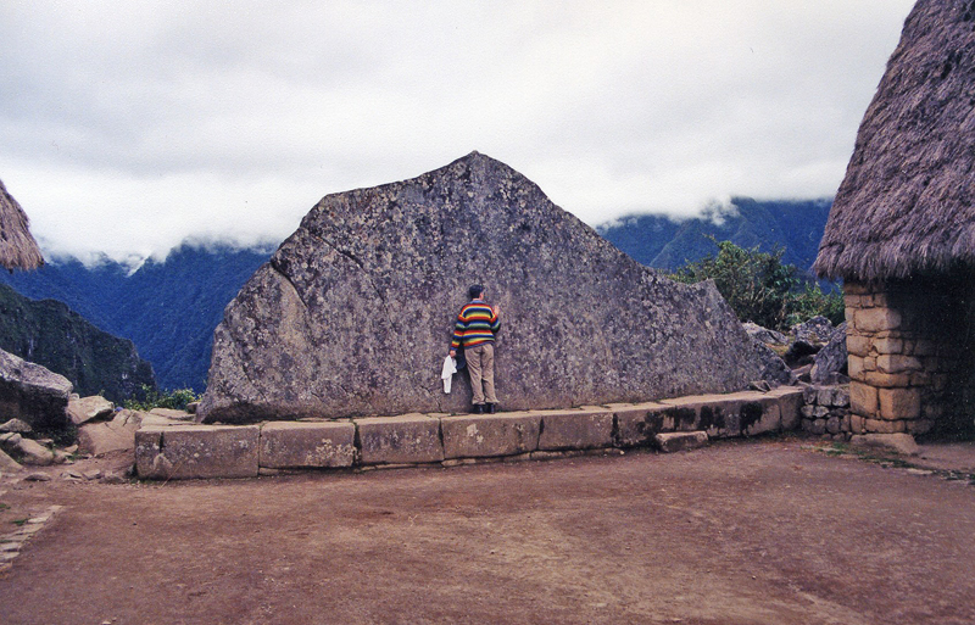
I don’t know if the northeast direction has a particular meaning to the Quechua people, but I would surmise that it does. For me, the northeast direction is that of the snake and symbolizes magic/mysticism/energy. When working with a major and minor direction, you are getting two powerful and different energies at once. Neophyte mystics do not work with them simply because it is too much energy to handle appropriately. Sometimes a major and minor direction, work together and sometimes they don’t, based upon the elements of the major directions involved.North is Earth and East is air. They are incompatible chemistry-wise. Earth and air do not easily mix.So the northeast direction is filled with the power of the snake/magician, and therefore, not easy to work with, much less assimilate within a human being to understand the energy of this two-for-one, direction. Working with a major and minor at the same time, is not for neophytes. Only a mature, experienced mystic can approach two directions at once with success.
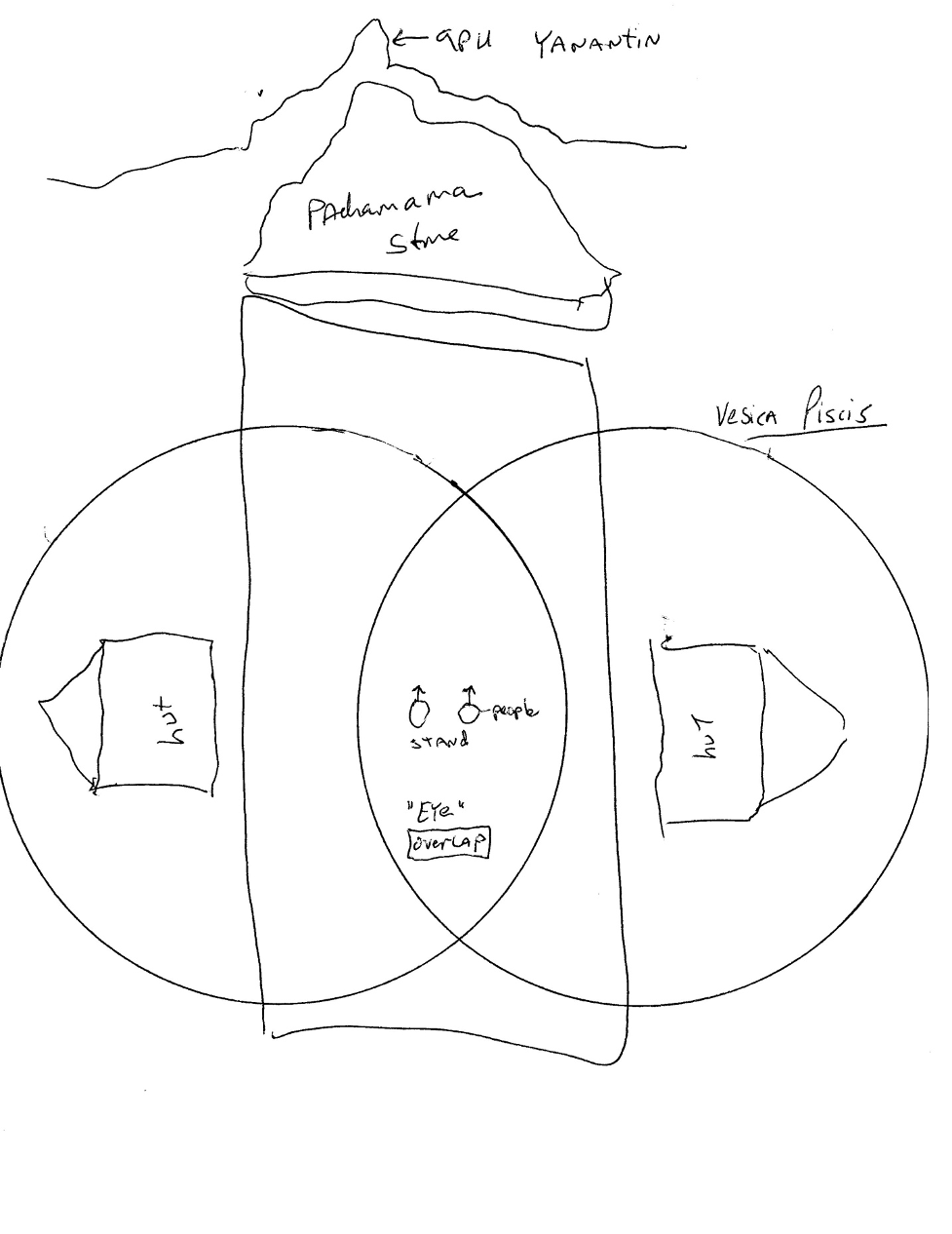
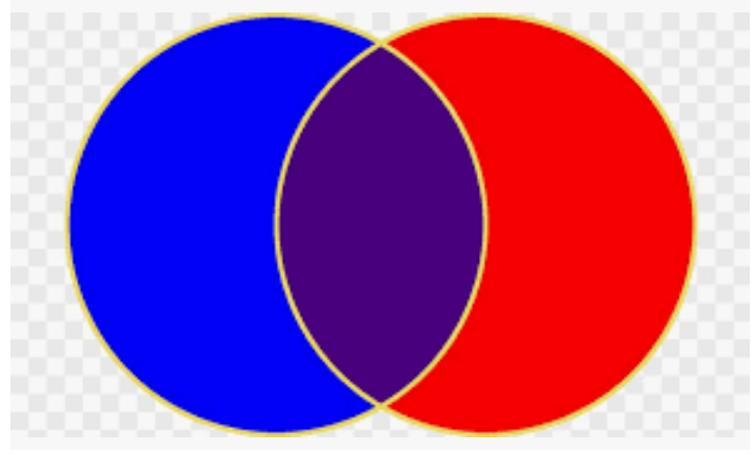
Sacred geometry: The Vesica piscis symbol of two circles overlapping. Where they connect, I call it the “eye” of the fish. The Latin term means: a fish’s bladder. A fish can rise to the surface of the water or sink downward to a depth by letting air in and out of their bladder. The overlap reminds a lot of people of a fish; hence the Latin word: Vesica piscis. It is in the “eye” that the energy combines and becomes a powerful, mystical experience for anyone who stands within it.
Sacred Geometry is everywhere on the Machu Picchu complex (which includes the Lunar Temple at the Urubamba River just outside the northeast gate, as well as the Lunar temple and other mystical/symbolic buildings atop Huynu Picchu. I am a beginner to Sacred Geometry, having backed into it accidentally at Chalice Well in Glastonbury, and then later to realize the placement of the huts along with the power of Apu Yanantin/Apu San Juan, that the Vesica piscis (VP) was there, too.The Incas KNEW about this symbol, its energy, and built the plaza, hand carved the Pachamama stone to mimic Apu Yanantin, whose energy fueled this VP circles and then worked with the opposite Apu San Juan in the southwest. The Inka were trained in energy, understanding it, knowing where it emanated from, where it was connected to other landscapes/mountain chains/lakes, rivers and oceans (where mountain ranges exist—as above, so below) and to work in concert with it.
Walking the Land teaches a person how to first, see outward, external “signs” of energy alignment.Perhaps a landscape (a mountain, for example), a tree, a lake, or unseen water beneath the crust of Mother Earth. Everything has energy. The above named were recognized by ancient wise women and men, and they built temples to utilize it and sometimes, to harness or direct it for a specific reason. There is a global energy network that is alive and well to this day via the mountain ranges above and below the oceans. It is our main energy stabilizer to keep Mother Earth from “wobbling,” thereby causing great havoc that is now being seen by Climate Change. Only, it is human pollution that is causing the destabilization, not the natural world, which is still doing its job correctly.
At the Machu Picchu complex, I began to determine where the energy went, what it was about, and what the energy was doing not only to the local and regional area, but realizing it was a global “energy hub” and contributed daily to the invisible energy movement around the planet in order to keep it in balance/harmony. The mountains, whether alone or in a range, give Mother Earth her stability.
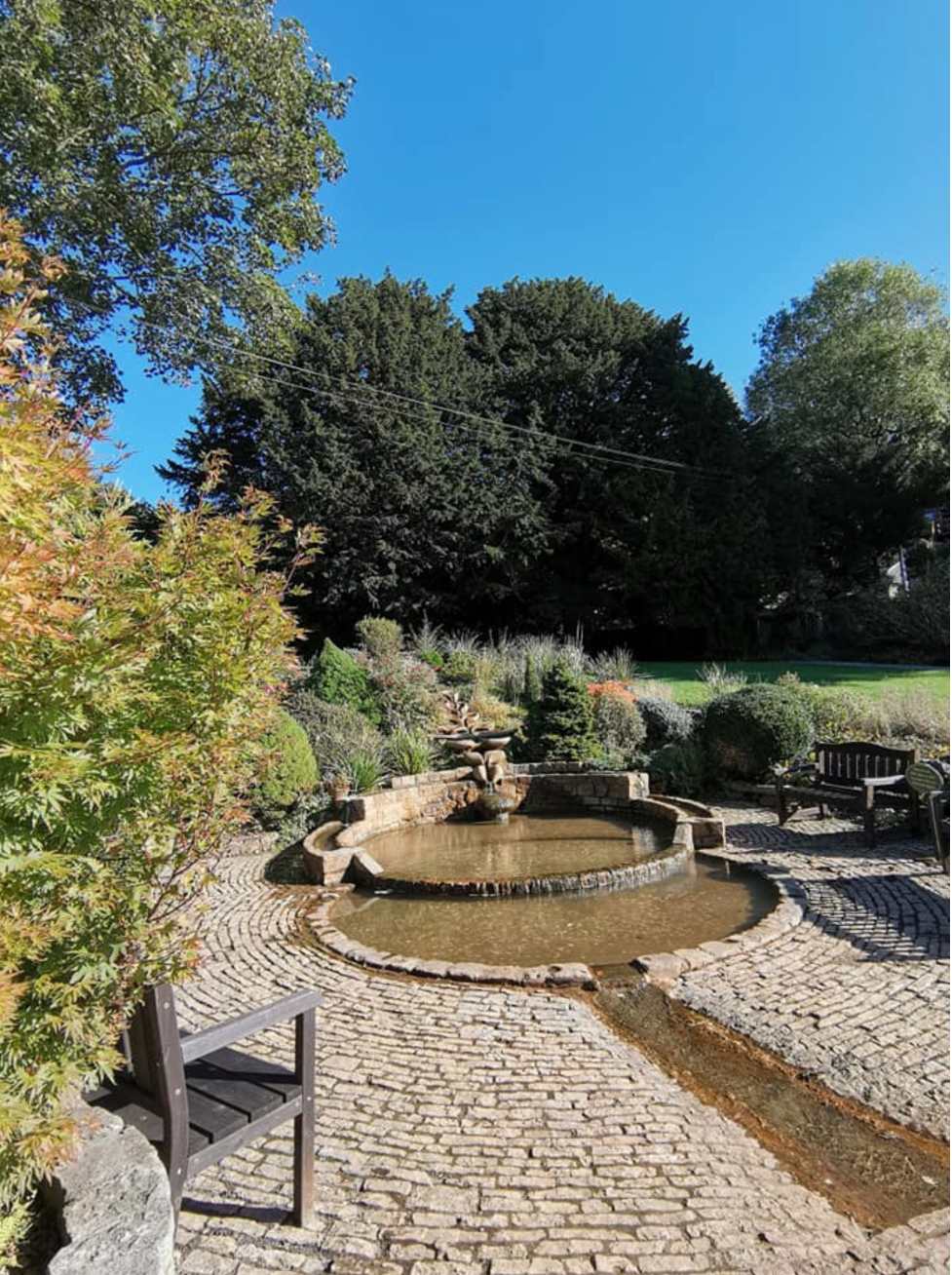
Chalice Well, Glastonbury, England, has a Vesica piscis pool at one end of the garden, with the Red/feminine stream of water moving gently through it. Where the circles overlap is the ‘eye’ of the two circles.
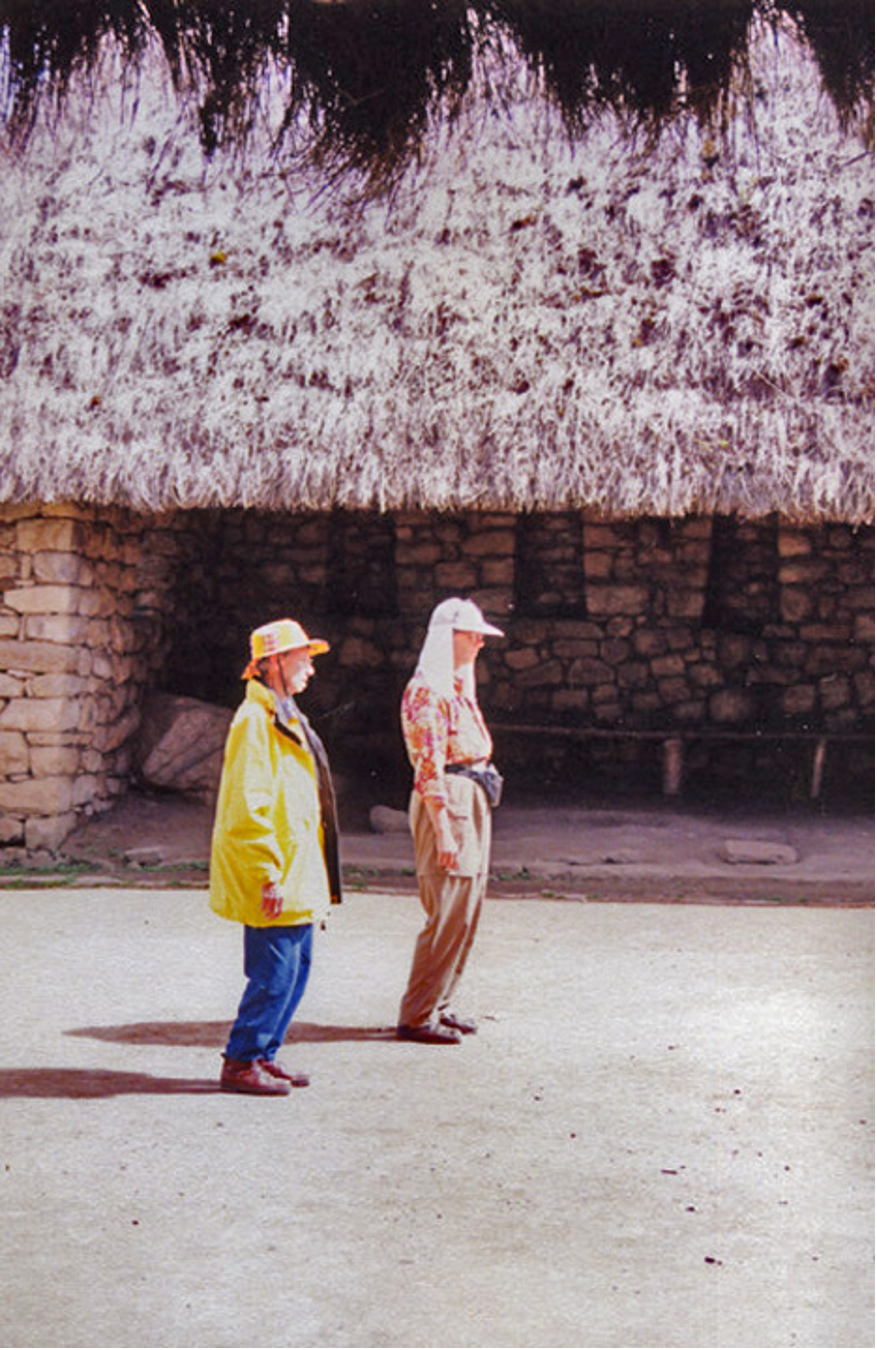
Ruth Gent (left), Eileen Nauman (right) mother with her at Harmony Plaza. You can see their knees are slightly bent (so you can move right, left, forward and back, without moving your feet), eyes closed, arms hanging at sides, and as relaxed as you can become so that Apu Yanantin and Pachamama Stone and the opposite Apu San Juan in the southwest, can realign our auric fields and makes us as “in-harmony” with ourselves as possible….and understanding no one is perfect, so the realignment must take place within that human’s framework and incarnation. It brings a sense of wholeness, a sense of harmony with all things in all dimensions, peacefulness, calm, optimism and gratefulness for all beings a part of the sacredness that exists in this magical spot.
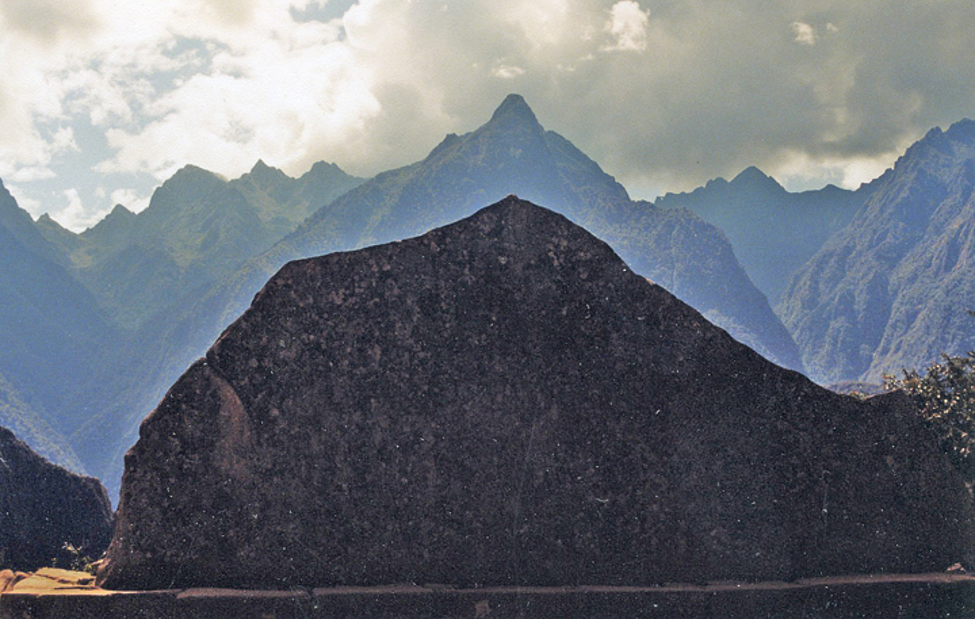
For more information on what the Quechua word, “yanantin” means:http://philopolitics.org/2020/09/27/yanantin-and-masintin/
Yanantin and Masintin
http://philopolitics.org/2020/09/27/yanantin-and-masintin/
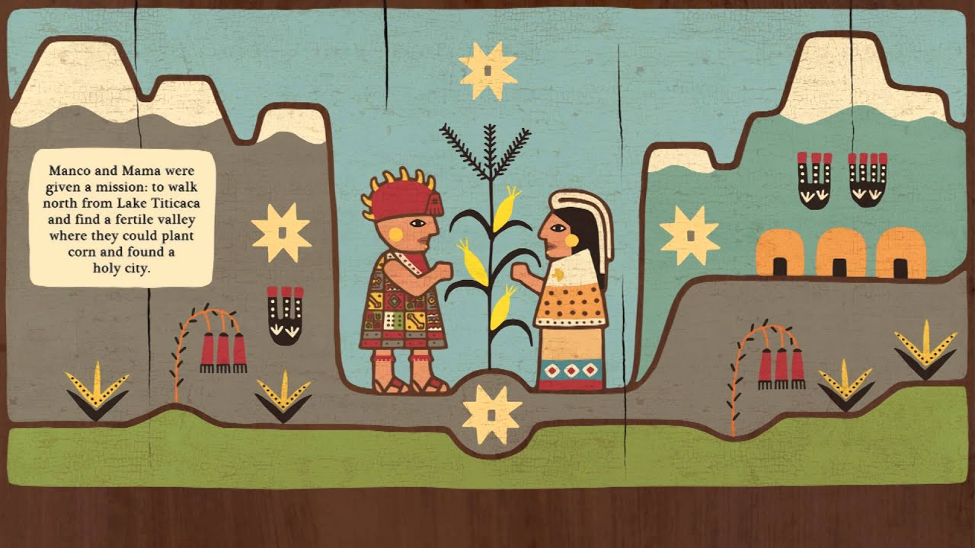
Andean civilization is unique in many ways. It is the only great civilization that originated on the mountain range – the Andes, after which it got its name. Also, it is the only one in which an empire of continental proportions was created, but which did not have a script, a wheel, riding animals, or even money. When all the circumstances are taken into account, a common-sense question arises – how is any civilization, let alone an empire, possible in such conditions? One of the possible answers lies in the ancient and still present principles of Andean societies – yanantin and masintin.
In the Andean world, everything exists in duality – city, parts of the world, cosmos, society, man. Everyone/everything is connected to someone else and together they form a complementary whole. It is this view of life that has built into Andean societies an unbreakable faith in togetherness, solidarity and cooperation.
Masintin – a complementary friendship
Masintin is a term composed of the word “masi” which means “friend” and the suffix -tnin which means belonging, creating a community, complementing, what accompanies someone or something. Roughly speaking, the term could be understood as a complementary friendship and it is something that accompanies every member of the Andean community from birth to death. Even after that! Everyone is connected to someone, and even a person that is single is in relationship with his/her community. Also, all children are “masintin”, in relation to their parents. However, it is not an eternal state and in order to reach full maturity and develop a personality, it is necessary to live with a partner:
“[U]npartnered people are missing an important part of them. They say that when you don’t have a partner, you are only half of a being. Alone, you are precious, you are unique, but you are only part. You are not whole yet. This is because when you are by yourself, you are either accumulating so much that it is overwhelming or you are draining yourself so much that you become weak. Because of that, you will feel fear or confused or lost. … you may know yourself, but you can never see yourself. For that you need another person. You need other eyes, another perspective to see that. When you are a child, you have your parents, but when you become older you no longer have your parents to see you, to recognize you. As an adult, your yanantin, your partner, is the person who is there to see what you don’t see in yourself, just as you are there to see in that person what he doesn’t see in himself. That is why it is easier to take care of another person than of yourself—because you are not supposed to take care of yourself! For that, there is the other person.”[1]
Yanantin – a complementary partnership
So what makes us complete is yanantin. When children mature, they start looking for their “yana” (lovers, partners), in order to become “yanantin” – harmoniously paired, complemented. It is also done with the help of “masintin”, that is, through friendship and getting to know each other, through building relationships on what unites and completes us. This is the only way to grow and mature – in the eyes and through the care and tenderness of someone else. From the word “yana” came another Quechua word “yanapay” which means help, which can again be obtained through a relationship of love with another person.
“Love relationships in Quechua[2] are always based on mutual help. The more you help someone, the more you love him,” says Arawi Ruiz, a Quechua historian and chairman of the Quechua Academy of Humanities[3]. “Duality always exists, so that we are aware of the needs of the other. Duality also exists within the individual himself – in the relationships and needs of his male and female sides of personality”, emphasizes Ruiz.
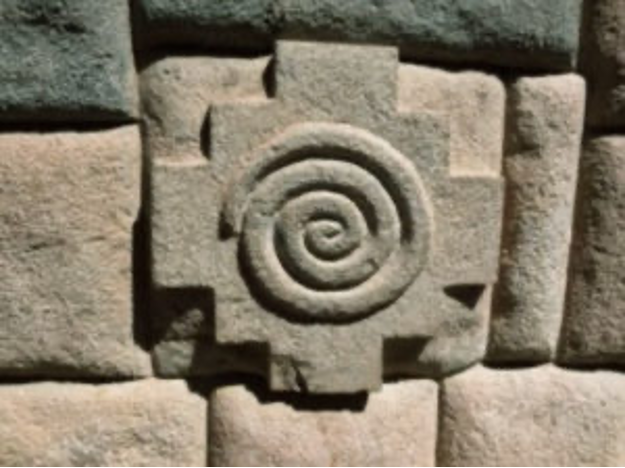
Asymmetry as a condition of motion
Although one of the translations of the term yanantin is mutual complementarity, one of its main features is asymmetry, inequality. Although at first glance it may resemble Taoism or dialectics, there are no contradictions here:
“For us, yanantin doesn’t focus on the differences between two beings. That is what disconnects them. Instead, we focus on the qualities that brought them together. That is yanantin. We don’t really see the differences. That’s why we see them as not necessarily opposed, but as complementary. One on its own can’t hold everything, can’t take care of everything. Not only are they great together, but they need to be together. There is no other way. When there is another, it represents extra strength for both.”[4]
In that relation, one side is always stronger, more dominant. And it is in this difference that brings dynamism, mobility and change. Disparity is the basis of reality and represents the force that allows things to happen. Asymmetric dualism believes that reality is made up of different and even opposing forces, but which need each other to be complete, that is, yanantin.
That these are not extreme contradictions is also indicated by the fact that homosexual couples could also be yanantin. “In Andean civilization, homosexuality was considered sacred. Also, femininity was considered divine and the more feminine someone was, the closer he was to Pachamama – the mother goddess of this world. “Even men here speak ‘softer,’ as an expression of decency and good manners,” says historian Ruiz. What a cruel contrast to Christian patriarchy! Today, same-sex couples are no longer allowed to be called yanantin, but are classified as masintin, due to the pressure and domination of the Catholic Church and its traditions.
Yanantin as a basic value and principle of Andean civilization
Almost no pristine civilization has so deeply and omnipresently insisted on the needs of the other, on solidarity out of love and on the concern for reciprocity as its basic and fundamental values. Such a setting of society also explains that many Andean cultures, such as the Caral / Norte Chico civilization, managed to build stunning temples and cities at the same time as the Egyptians built the pyramids. However, unlike Mesopotamia, China, or Egypt, buildings were built here without any signs of coercion, war, violence, or the need for defense — all cities were open and without walls[5]. All this leads to the assumption that people were not led there by force or flight, but by unity and faith in the common good.
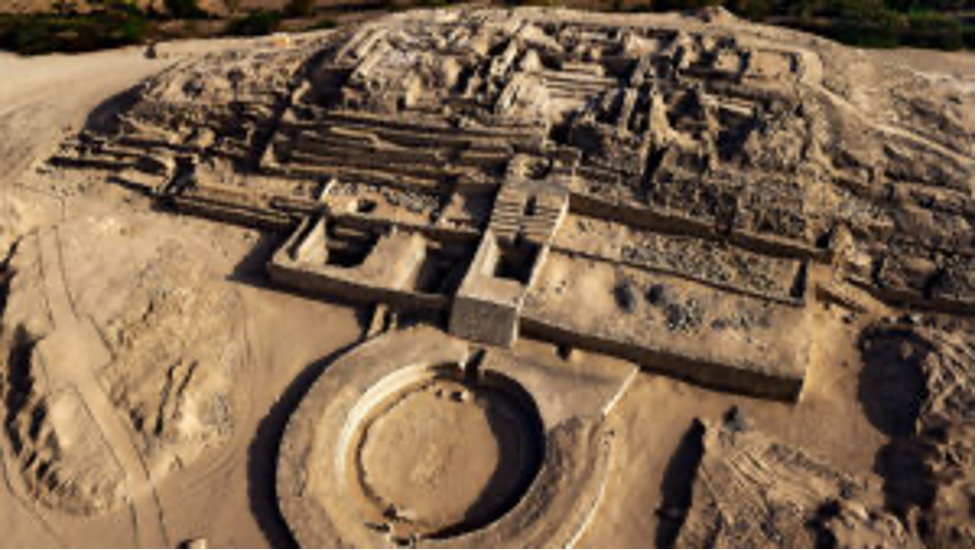
Reciprocity was also a basic principle for the economy of the Inca civilization. Without money, this empire managed to achieve a distributive economy. Similar to the principles of communism (to everyone as needed), the system developed joint works (mita) and cooperative warehouses that equipped all citizens with everything they needed to live and work – food, clothing, weapons and tools. But in addition to the very sophisticated social policy of the state, there has always been a custom among the Andean peoples of mitk’a – that is, mutual assistance in work. This help was not charged (money certainly did not exist), but was repaid when the other party needed help.
Andean people have achieved what would be unthinkable in the so-called Old World – they have built civilizations on solidarity. Certainly, it was not a world without wars and bloodshed. Let us cite only the example of the Inca Empire, which conquered the entire northwest of South America through diplomacy and armed force. However, the cultural code of the Andean world has woven solidarity into everyday life and has not been able to exist without it. Even after the colonial conquest and destruction of local states and elites, among the people of the Andes even today yanantin and masintin form the basis of society and economy and make it an example of overcoming impossible obstacles through a deep faith that through caring for neighbor we provide welfare for all, even for ourselves.
Cover illustration: Screenshot of the animated video “Origin Story of the Inca” @Smithsonian National Museum of American Indian
All copyrights are reserved. It is allowed to publish the article with citing the name of the author and the source.
[1] Webb, Hillary S. (2012). Yanantin and Masintin in the Andean World: Complementary Dualism in Modern Peru. Albuquerque: University of New Mexico Press. P.139
[2] Quechua are a native people of South America who speak the Quechua language, which was the official language of the Inca civilization
[3] Correspondence with Professor Arawi Ruiz, 23 September 2020.
[4] Webb, Hillary S. (2012). P.24
[5] Mann, Charles C. (7 January 2005). “Oldest Civilization in the Americas Revealed”. Science. 307 (5706): p. 34–35
Andean event “Yanantin” at UCLA spreads awareness about Quechua language
